Passage Preparation™ now offers courses to help you prepare for the Praxis Core Tests!
The Praxis® Core Tests: What Are They?
ETS develops and administers the Praxis® Core Academic Skills for Educators (Praxis Core). However, the Praxis Core actually consists of three separate tests: Core Reading (5713), Core Writing (5723), and Core Mathematics (5733). ETS has updated these tests, but previous versions include Praxis I and the Praxis Basic Skills tests. The Praxis Core tests measure your academic ability in each content area noted above. Often, teacher preparation programs require passing scores on these tests before students begin their coursework.
What Do the Praxis Core Tests Measure?
The Core tests measure skills expected of a teacher candidate at the start of their teacher preparation and are often required before entry to a preparation program. Accordingly, these are skills that have been identified as important for success during teacher preparation. Although they are sometimes referred to as basic skills tests, these tests are actually quite challenging. Let’s break down what each test covers and how they are structured.
Praxis Core Reading
The Core Reading (5713) test assesses the content categories below. Click on each category for descriptive statements in order to find out what you will need to identify for that category on the test.
Key Ideas and Details
Main idea and primary purpose
Supporting ideas
Inferences
Craft, Structure, and Language Skills
Attitude and tone
Organization and structure
Meaning of words
Fact or opinion
Integration of Knowledge and Ideas
Diverse media and formats
Evaluation of arguments
Analysis and comparison of texts
The Core Reading (5713) test includes four different types of reading passages as well as paired questions:
| Paired Reading Passages | Long Reading Passages | Short Reading Passages | Brief Statements |
| – two passages which you analyze in relation to each other -approximately 200 words -paired with 4-7 questions |
-approximately 200 words -paired with 4-7 questions |
-approximately 100 words -paired with 2-3 questions |
-generally one sentence -paired with one question |
When you prepare for the test, keep in mind that you have 85 minutes to complete all sections. All in all, the Core Reading (5713) includes 56 selected response questions.
Praxis Core Writing
The Core Writing (5723) test assesses the content categories below. Click on each category for descriptive statements which explain what you will need to identify for each category on the test overall.
Text Types, Purposes, and Production
Text production: writing arguments
Text production: writing informative/explanatory texts
Text production: revision
Language and Research Skills for Writing
Language skills
Research skills
The test includes 40 selected response, or multiple choice, items as well as two essay, or constructed response, items. Altogether, you have 100 minutes to complete the Core Writing test. The test is administered in one sitting although it is broken into three timed sections:
| Selected Response Section | Essay Section 1 | Essay Section 2 |
| 40 minutes | 30 minutes | 30 minutes |
How To Approach an Essay Question
Essay, also known as constructed response, questions require you to respond to a prompt. Thus, you read a prompt and then develop a response based on that stimulus. You may be asked to construct an argumentative essay or, instead, to write an essay analyzing a piece of literature. These items can be intimidating; however, Passage Preparation courses prepare you to feel confident and show your writing skills on constructed response items.
For example, Passage Preparation’s Core Writing (5723) course includes these instructions for developing an argumentative essay:

Praxis Core Mathematics
The Core Mathematics (5733) test assesses the content categories below. Click on each category for descriptive statements which explain what you will need to identify for that category on the test overall.
Number and Quantity
Integers, decimals, and fractions
Ratio, proportions, and percentages
Properties of whole numbers
Properties of measurement
Data Interpretations and Representation, Statistics, and Probability
Measures of central tendency
Data collection methods and application
Linear relationships
Probability
Algebra and Geometry
Properties of addition and multiplication
Algebraic equations
Real world application
Properties of 2D shapes
Angles
Finding area, circumference, volume of shapes and figures
All in all, the test includes 56 questions. You are given 90 minutes to complete this test altogether. This test includes three item types, each of which is described below:
| Selected Response 1 | Selected Response 2 | Numeric Entry |
| Select one answer choice | Choose all answers that apply | Calculate the answer to the presented problem |
Four-Function Calculator
The Praxis Core Mathematics (5733) test includes a four-function calculator, another feature of the test. Generally, you should use this calculator to conduct more involved, tedious calculations. However, it is usually faster to conduct simple calculations in your head, so do not use the calculator for every item.

How to Prepare for the Praxis Core Tests
Overall, there are some strategies you can use to help you prepare for these tests. Passage Preparation’s courses include in-depth, high-quality content and assessments to help you master the content covered on the exams Likewise, Passage Preparation courses help you practice responding to items structured like those on these tests.
It is important to understand how your course aligns to the competencies measured on the test; thus the image below, which is an example of the alignment between the Passage Preparation Praxis Core Reading (5713) course modules and the content categories covered on the test.

Our courses include a diagnostic assessment in order to help you identify the areas you should prioritize as you study. Then, you will develop a study plan to help guide you through the course content modules.
Additionally, you will complete checks for understanding and quizzes to help you engage with the content and practice taking items structured like those on your test. Finally, you take a practice assessment which is structured to reflect the actual certification test. In addition, you can take the practice assessment as many times as necessary to feel confident on your exam.
On Test Day
- Get plenty of sleep the night before the test
- Eat a healthy breakfast
- Arrive early to find parking and check in to the testing site
- Bring proper forms and identification
- Breathe, relax, and remain confident in your preparation
Passage Preparation™ Courses for Other Praxis® Exams
First you complete your Praxis® Core test your teacher preparation, and then you will take certification exams. Passage Preparation offers courses and course bundles, offering another way to help you prepare for Praxis exams required for certification in your state. For example, we offer the courses aligned to the following Praxis® tests:
- Principles of Learning and Teaching: 5-9 (5623)
- Principles of Learning and Teaching: 7-12 (5624)
- Early Childhood Education (5025)
- English Language Arts: Content & Analysis (5039)
- Social Studies: Content & Analysis (5086)
- Middle School Mathematics (5164)
- Mathematics (5165)
- Elementary Education Multiple Subjects Bundle (5001)
- Special Education: Core Knowledge & Application (5354)
- And many more!









